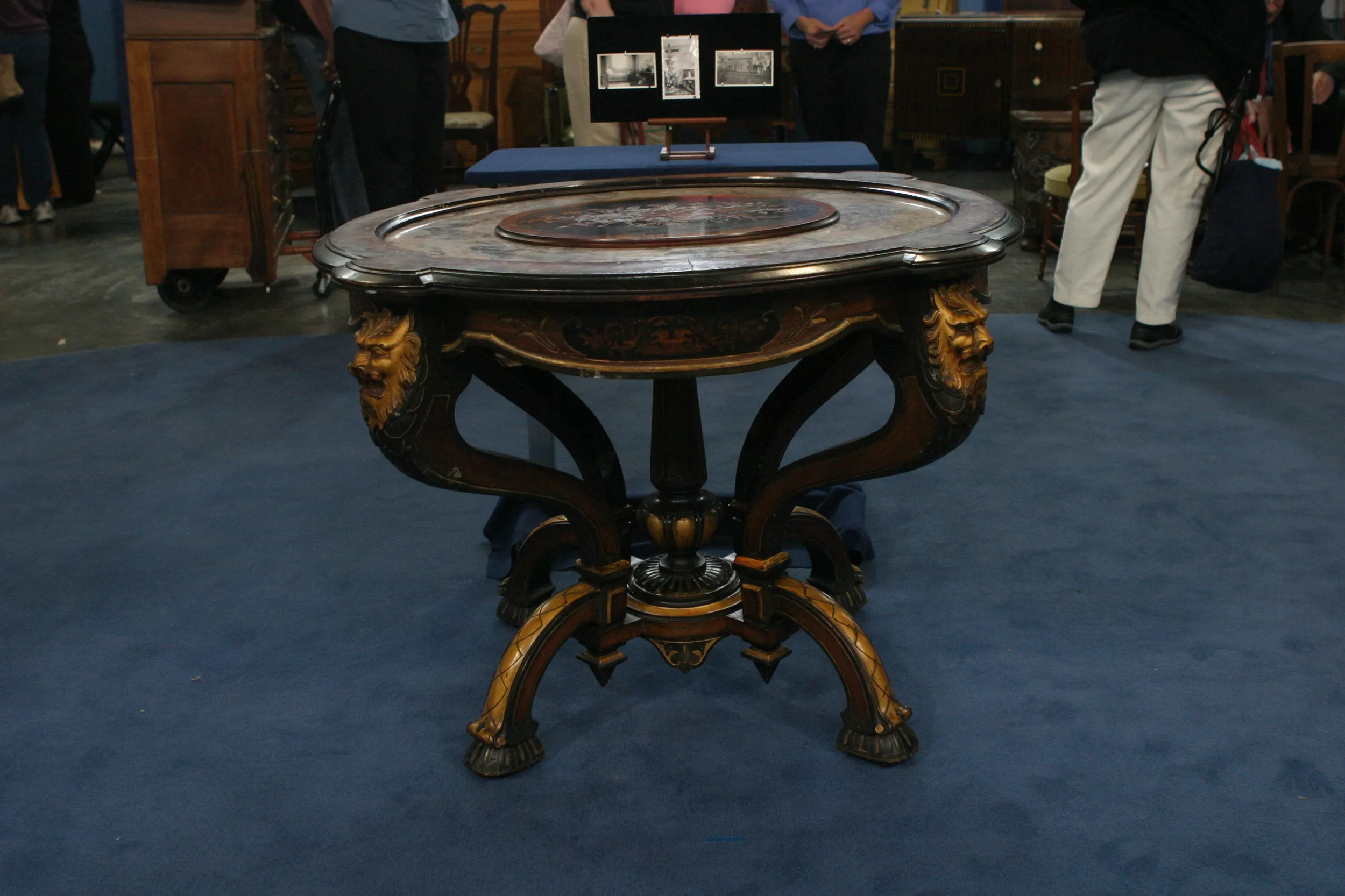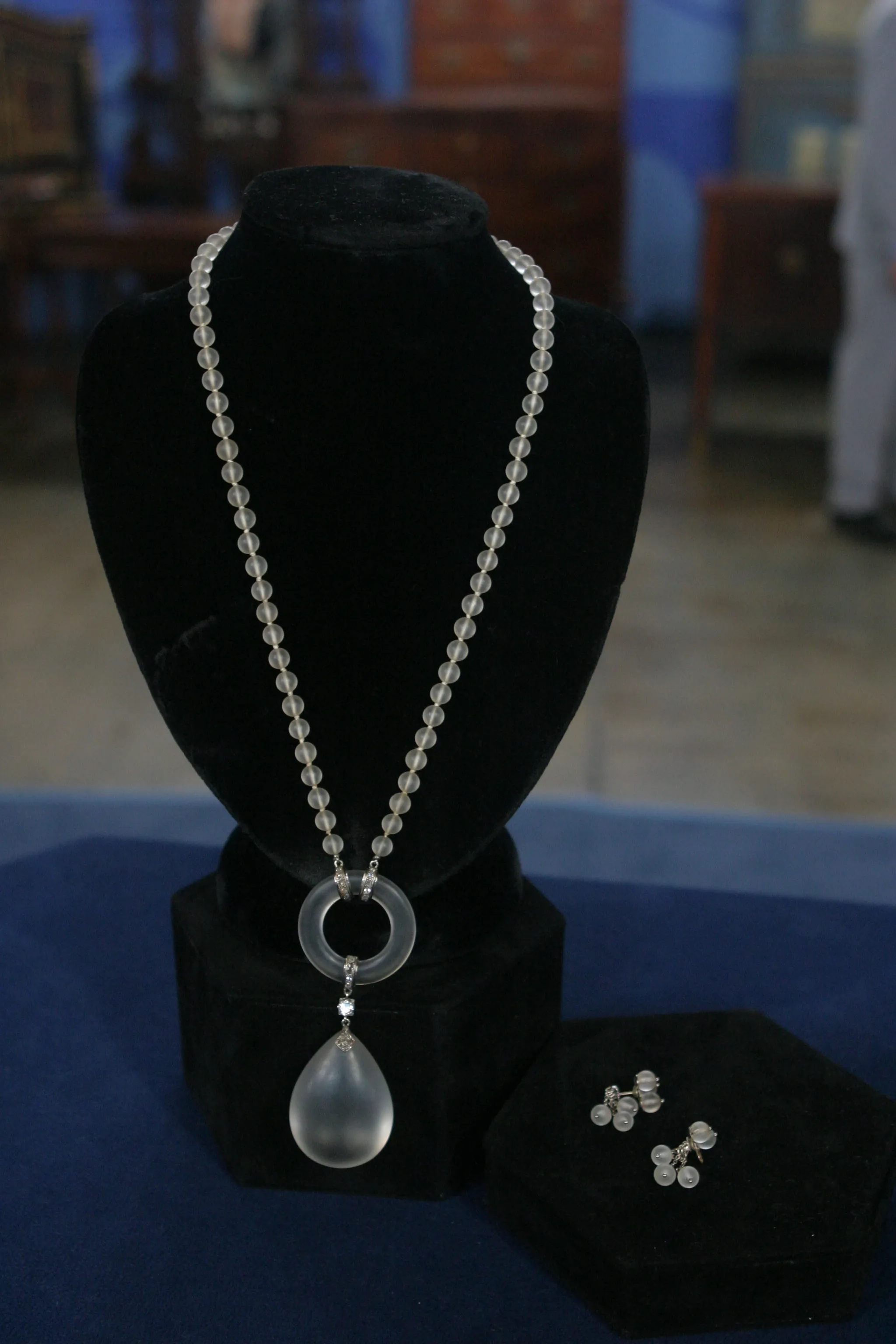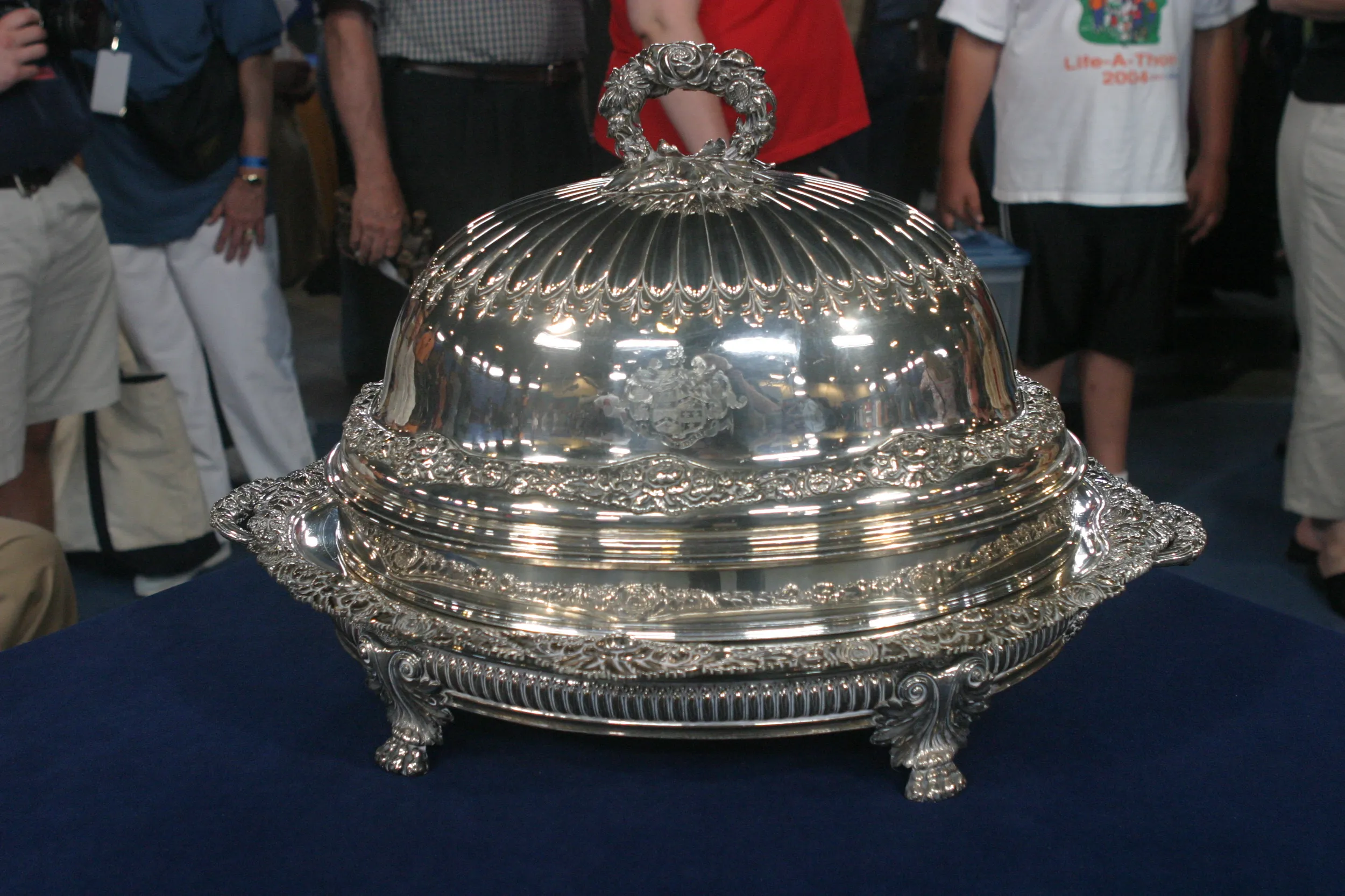GUEST: Just before the pandemic hit, I, uh, spotted these chairs in a consignment shop and thought they were pretty fun, pretty neat. Loved the whimsy and design of the artist. They actually rock, and, uh, they rocked my world at the time.
APPRAISER: Yeah.
GUEST: The shop went into, uh, lockdown...
APPRAISER: Okay.
GUEST: ...and wasn't open for several months, but when I went back a year later, the chairs were still there. The price was a little high for me. When I inquired about the best price, I paid $900 for them.
APPRAISER: And do you know who made them?
GUEST: She said that the artist was Alan Siegel.
APPRAISER: That's correct.
GUEST: From New York.
APPRAISER: Absolutely.
GUEST: She told me that the owners were wealthy patrons of the arts...
APPRAISER: Mm-hmm.
GUEST: ...that had owned the Union Oil Company in Maine. Apparently, the husband had passed away and the wife was downsizing, and these happen to be some of the objects that were given to this dealer.
APPRAISER: Yeah.
GUEST: So...
APPRAISER: Well, they are indeed Alan Siegel chairs. So Mr. Siegel was a, a fine artist. He made paintings, and he was quite successful at it. He had some immediate success, which is unusual for painters in general. And sometime in the mid-'60s, he had some sort of personal notion that painting wasn't what he was supposed to be doing. Something in his own mind made him want to stop, and he stopped, and he rented a house out by a beach. He started doing some sculptures, and again, he wasn't satisfied with the sculptures. So one day, he, he decided he needed some furniture for his beach house. (laughs) So he tore one of his sculptures apart and built a chair. And people really liked the chairs. He had representation in New York to a couple of galleries.
GUEST: Mm-hmm.
APPRAISER: That might be where your chairs came from, if they're from wealthy patrons. He did shows all over America. He, um, uh, did chairs in all sorts of styles. He did a number of metal chairs. He did a series of metal chairs using gingko leaves as backs and seats, which are just phenomenally beautiful.
GUEST: All right.
APPRAISER: These chairs obviously borrowed from the Memphis movement.
GUEST: Wow.
APPRAISER: The colors, the designs, the shapes.
GUEST: Jazzy, right?
APPRAISER: Very much so.
GUEST: Yeah?
APPRAISER: Yeah, the Memphis movement definitely wanted to break away from anything that was, uh, conservative, or anything that was normal, or anything that was everyday. And these certainly do that. We know they were made in 1989, because they're both signed Alan Siegel, and they say 1989 on the bottom. And these chairs are obviously made out of wood. It's hard to tell what kind of wood they are made out of, because they have several coats of paint on them. So I'm not sure. Whatever the wood is, it's strong enough to hold people up.
GUEST: And they're bent wood, I think, aren't they?
APPRAISER: They are bent wood, yes. Yeah. His work is, is just now being appreciated. I think from a investment perspective, you were very astute
to buy these when you did.
GUEST: Huh.
APPRAISER: 'Cause I, I assume that, that the market will continue, and it will probably go higher. Mr. Siegel is still alive.
GUEST: Wow.
APPRAISER: He's a wonderful man, he's playful... I mean, how could you not be playful and make these chairs?
GUEST: Well, I, I love them.
APPRAISER: At auction today, they're bringing between $2,500 and $3,500 apiece.
GUEST: Wow. Apiece. Awesome!
APPRAISER: Yeah, so you did really well. It would be very easy to sell them separately, and no one would be the wiser.
GUEST: Mm-hmm. I, I don't think I'd ever separate them.









